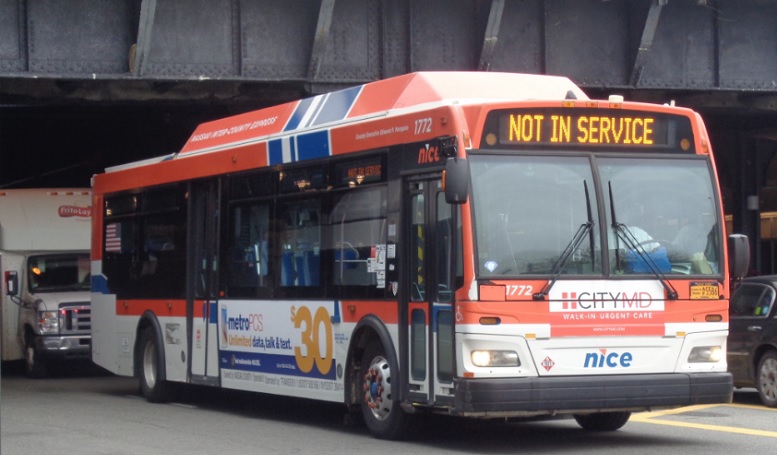A new analysis from the Tri-State Transportation Campaign shows that bus service in Nassau County has been on the decline ever since the county transferred bus service from the MTA’s Long Island Bus to a private operator in 2012. In the intervening years, county leaders have — with some exceptions — shunned their responsibility to fund the Nassau Inter-County Express (NICE) bus network, resulting in service and ridership declines.
Nassau County directly benefits from bus service. A 2013 report attributed over $191 million in economic output to bus operations. In spite of this clear benefit, county support for bus transit has been falling. In 2006, Nassau County allocated $13 million in today’s dollars for bus service. In the 2017 budget, Nassau County only allocates $4 million to NICE.
Nassau County’s lack of support has led to a direct decline in bus service. In 2010, MTA Long Island Bus provided 10.8 million miles of service throughout the county. Since then, service has declined to only 9.6 million miles — a 10 percent decrease. The county’s stinginess has led to ever rising fares — County Executive Ed Mangano has repeatedly relied upon riders to fill NICE’s budget, with fare hikes in each of the last four years — and even more service cuts. In April of 2017, NICE was forced to eliminate an additional seven routes while reducing service on a number of others. In order to avoid more service cuts in the future, county leaders will need to identify a new long-term funding source to maintain this vital service.
All of these funding cuts and service reductions have a predictable outcome. In the wake of faltering support and declining service, riders are finding other ways to get around. Nassau County bus ridership peaked at 32.5 million in 2008. Since then, ridership has fallen to just over 27 million in 2016. The vast majority of this decline occurred as Nassau County continued to cut funding for NICE.
Over the past 10 years, Nassau has managed to string together a bare bones bus transit service with minimal funding, but the residents of Nassau County deserve better. In order to ensure its bus network continues to provide residents access to opportunity throughout Nassau and beyond, the county’s elected leaders must identify a stable, dedicated funding source for NICE. County and state legislators must prioritize the needs of bus riders when budget discussion begin this fall in Nassau and early in 2018 in Albany.
Mobilizing the Region is published by the Tri-State Transportation Campaign, a 501(c)(3) non-profit policy advocacy organization. If you’d like to support our work, please make a tax-deductible donation today.


[…] Nassau Officials Have No Love for People Who Ride the Bus (MTR) […]
Please read the article via the link below about the neglect of funding for public transportation in Nassau County, most particularly for NICE buses. Given the traffic and pollution issues of our county, bolstering this essential public service —which is an indicator of economic health and political stability for any community, especially one as wealthy as Nassau Cty. — is more important than ever.
https://blog.tstc.org/2017/08/17/analysis-nice-ridership-service-decline-nassau-county-support-bus-transit-plummets/
Why shouldn’t riders pay the full cost of their ride? They did in the 1950s.
Well fine we’ll do that! I hope the next time you take the LIRR you do that as well! Since the farebox recovery rate for the LIRR is in the 20% category, I hope you can afford the increase! The true cost of the service would go down tremendously on a bus if more people utilized it, not so much on the railroad at current rates!